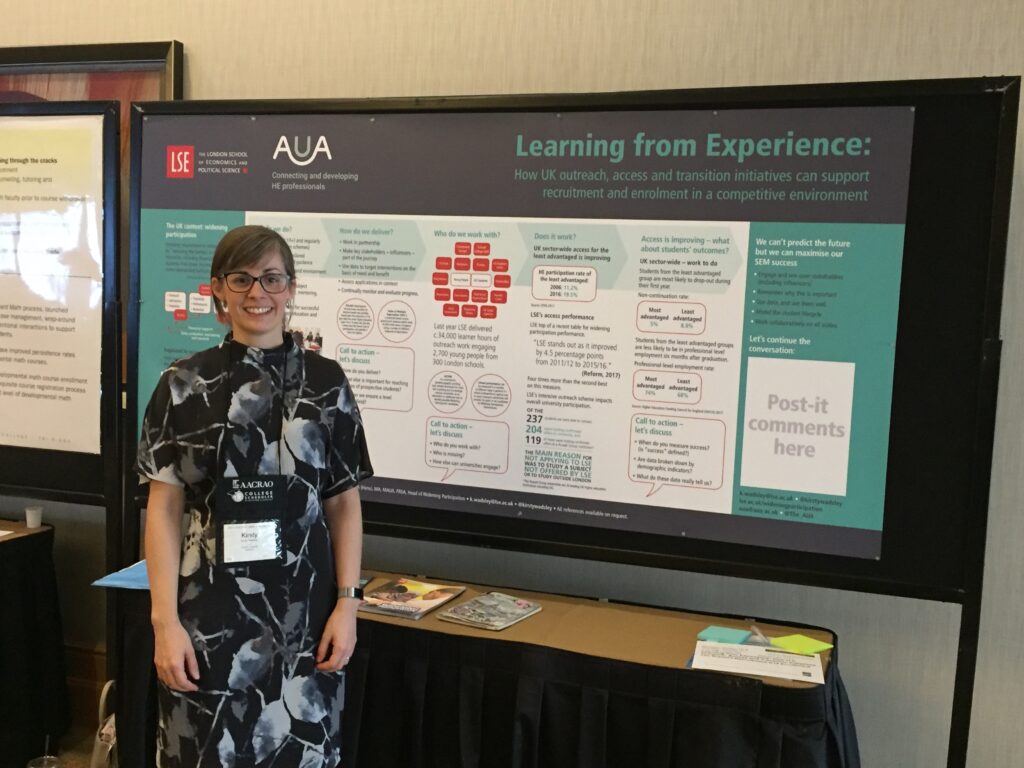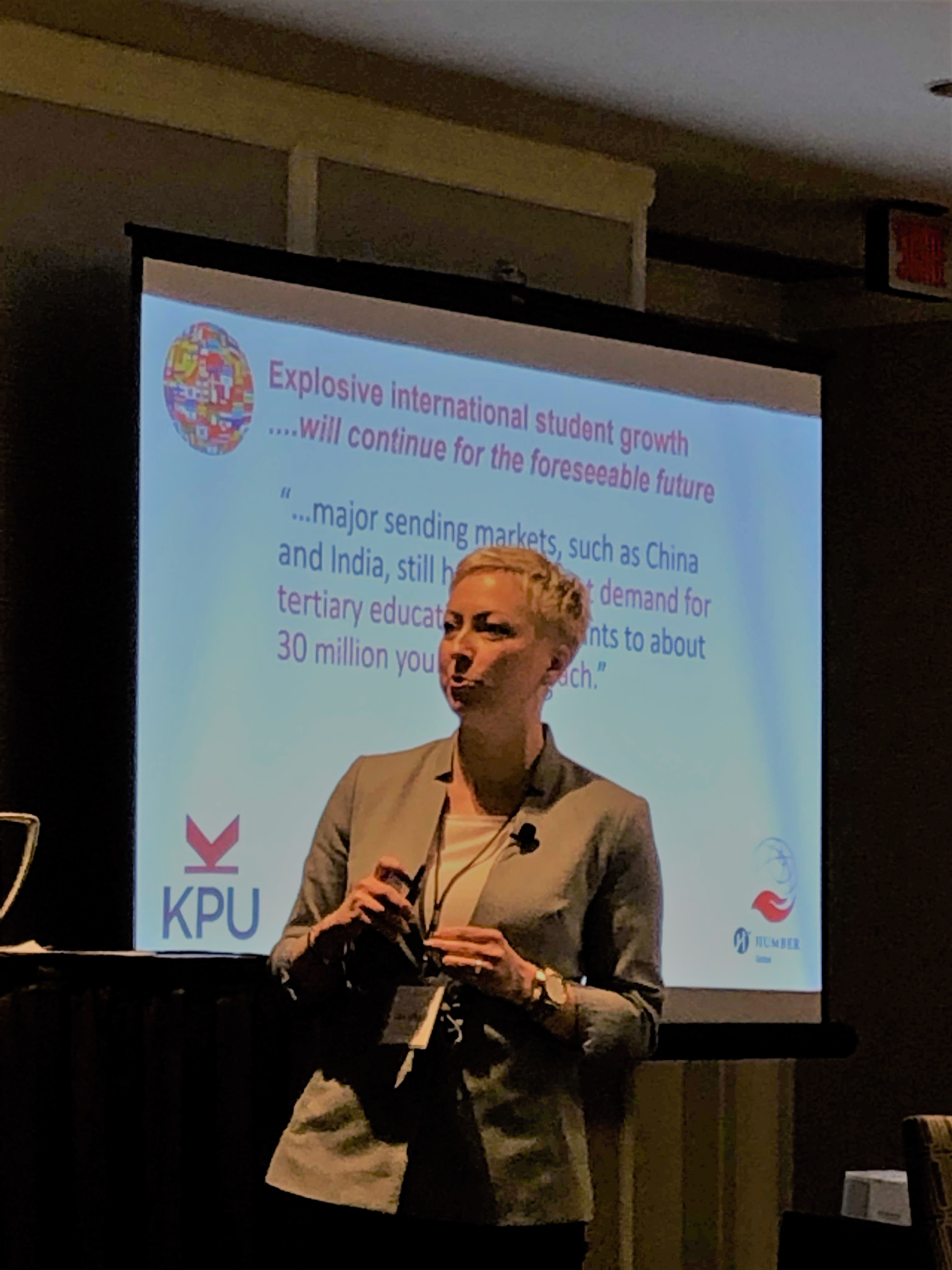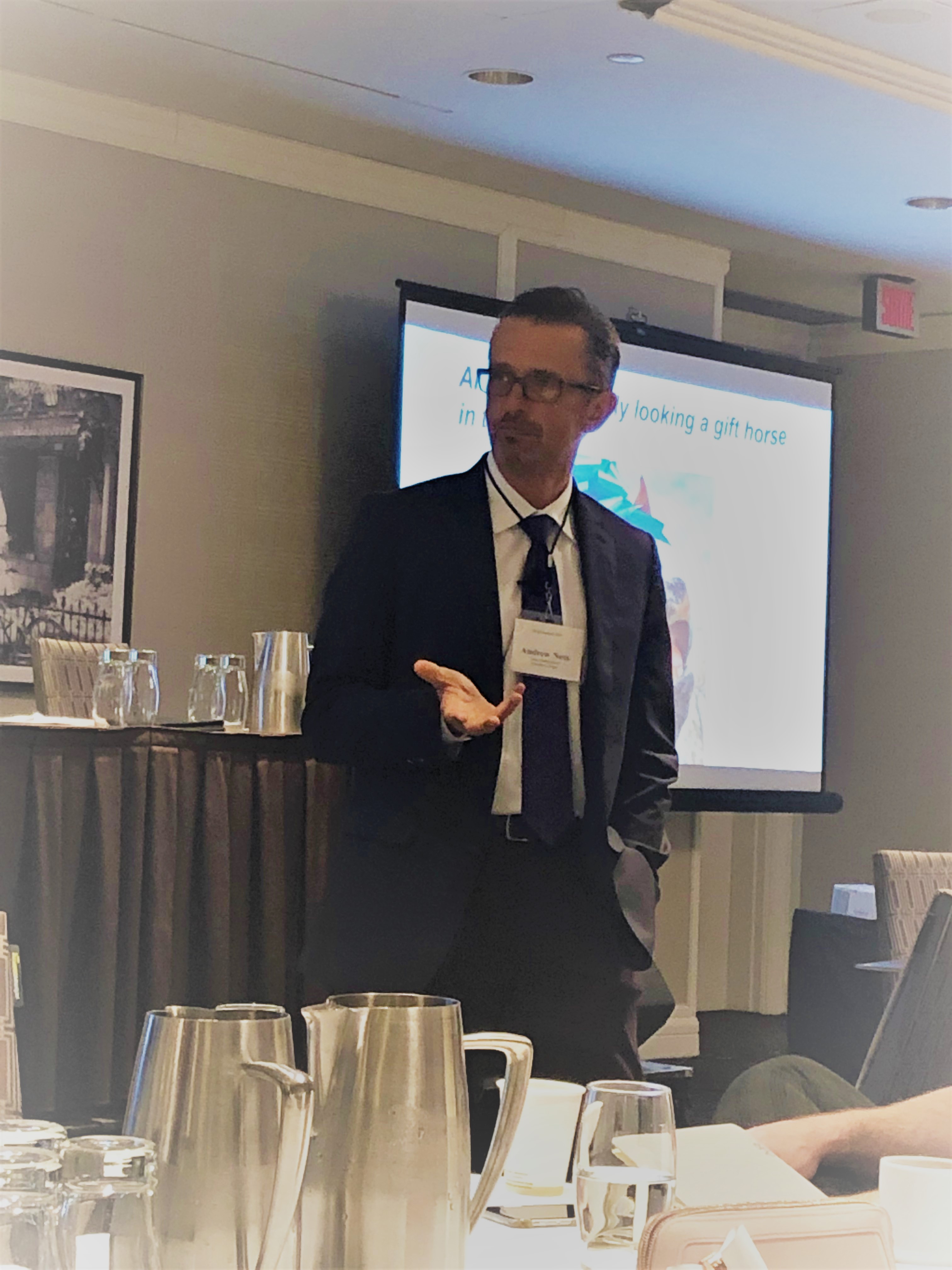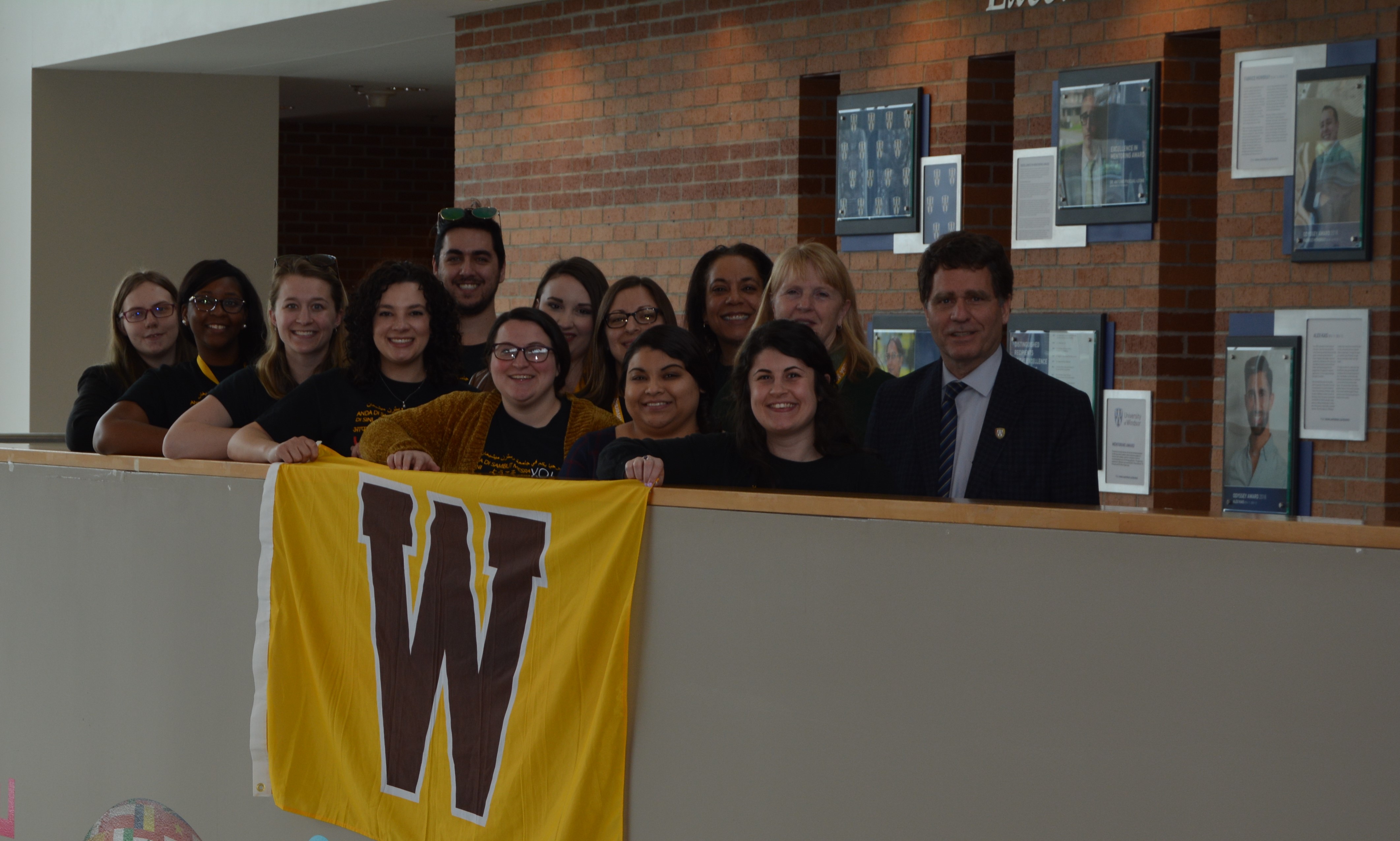Home » Student Affairs
Category Archives: Student Affairs
Pathways to Post-Pandemic Enrolment Growth in Higher Education
Recently, Stefanie Ivan, an enrolment management consultant and Royal Roads associate faculty, and I had an opportunity to facilitate a webinar on “Pathways to Post-Pandemic Enrolment Growth in Higher Education.” This is a follow-up webinar to the one we conducted on post-pandemic higher education enrolment trends (see my earlier blog) in February.
We asked participants to share their most effective strategic enrolment management (SEM) strategy efforts. We then asked them to describe strategies for enrolling and supporting international, Indigenous, and domestic learners. Lastly, we asked them to say a bit about the learner and student support they provided.
When asked to provide one word that describes the effectiveness of current SEM strategy efforts, the most frequently mentioned were disconnected, work-in-progress, and growing. Others identified include developing, unsure, hopeful but slow, disjointed, uninformed, innovative, ongoing, challenging, deepening, modest, and uncertain. It appears that the experience with SEM is quite variable with some saying it is stalled while others report it as in progress or growing.
We then asked about strategies in use to enrol/support specific types of students. Below are some of the comments we heard.
International Students:
- Work closely with our key agents and agent relations management; strengthen relational networks
- Develop a personal connection to the institution and community
- Targeting markets that connect with Canada’s labour shortage areas
- Provide incentives that are appealing to international students
- Optimize admissions processes
- Utilizing a group effort to recruit international students
- Develop personal communications
- Have not returned to accepting international students yet
Indigenous Students:
- Focused listening and working with communities to address their concerns and needs; engaging communities through partnerships
- Developed an Indigenous strategic plan
- Established an Indigenous scholars’ circle
- Increasing and deepening supports
- Going to communities with incentives, application forms, and testing formulas for completion on-site
- We are not currently recruiting Indigenous students
Domestic Students:
- Balancing in-person and online events
- More first-year transition strategies to help retention and success
- Target movement in the job market and second-career students
- Utilize a blended delivery model for full-time and part-time students
- Work toward understanding what students and employers
- Reach out to withdrawn student
- Establish better support services, create more webinars/engagement, partner with community organizations, and follow-up strategies
- Treat in-country ESL/ELL students as domestic prospects
Learner and Student Support:
- Online advising
- Development of non-academic learning communities
- Increased/streamlined communications (phone, email, forums, chatbot, extended hours, weekends)
- 1:1 wellness check-ins
- Alternative accommodations for learners who need it
- A strong return to in-person and social and co-curricular activities
- Entering students into classroom settings right away to determine learning needs
Here is the Video from the webinar.
With so much to do to stabilize and grow enrolments during these post-pandemic days, it will be important to be strategic and there is no better way to do this than through adopting and implementing SEM!
-Clayton Smith
Canadian Post-secondary Enrolment Trends
Recently, Stefanie Ivan, an enrolment management consultant and Royal Roads associate faculty, and I had an opportunity to identify enrolment trends facing Canadian higher educational institutions for a series of Royal Roads University webinars. In this blog, I will share what we found.
Let me describe our methods. First, we reviewed publicly-available data on the web that included provincial data reports as well as those compiled by Higher Education Strategy Associates, Globe and Mail, Statistics Canada, Canadian Undergraduate Survey Consortium, and the Council of Ministers of Education. Second, we collected comments from our social media network and Canadian colleagues. Third, we received input from students currently enrolled in the Royal Roads University Graduate Certificate in Strategic Enrolment Management.
Here are some of the aggregate enrolment trends we uncovered:
- College enrolments are continuing to grow, mostly due to continued international student enrolment growth. Some declines were reported in the Maritimes. Also, there is a reduction in demand for trades programming due to low unemployment.
- University enrolment is mostly stable or recording slight increases/decreases. Some of this is due to part-time student enrolment increases.
- Students may be shifting away from big urban research universities.
- A slight increase in inter-provincial mobility was experienced in the Maritimes.
- Admission conversion rates are becoming less predictable.
- Completion rates have been impacted in some areas.
- There is a growing interest in a gap year for direct-entry high school students.
And here are the student-type enrolment trends we found:
- Indigenous enrolment and completion rates are lower than rates for non-Indigenous persons. But the Indigenous birthrate is still the fastest among the groups monitored.
- International student enrolments continue to lead enrolment growth.
- Attrition rates are still impacted by the pandemic and high school students who did not seem to be prepared for post-secondary studies.
- The enrolment mix continues to change. Visible minorities, learners with disabilities, and learners with mental health issues are increasing.
- Students want to be primarily on campus, with some hybrid instruction.
- Trust building with communities continues to impact some enrolment.
Here is the Video from the webinar.
We will be doing a follow-up webinar to explore the enrolment strategies that institutions are using to address these challenges. Feel free to share any strategies your institution is using or hoping to implement in the next year, and we will include them when we present on this topic for our follow-up webinar on Tuesday, March 21st. Here is a link to sign-up if you want to listen in or (hopefully!) participate in our discussion.
The times are certainly uncertain and changing.
-Clayton Smith
Achieving Personal Mastery with SEM
In idealistic-pragmatist, Peter Senge’s The Fifth Discipline (1990), one of the five disciplines is personal mastery (the others are systems thinking, mental models, building shared vision, and team learning). Senge writes, “Organizations learn only through individuals who learn. Individual learning does not guarantee organizational learning. But without it no organizational learning occurs” (p. 139) So, for our institutions to grow, each of us must find our own path to personal mastery.
Senge describes personal mastery as “the discipline of continually clarifying and deepening our personal vision, of focusing our energies, of developing patience, and of seeing reality objectively” (Ibid, p. 7).

For enrollment managers, one of the ways of achieving personal mastery is through developing professional competencies and proficiencies in Strategic Enrollment Management (SEM). For those new to SEM, here is one of my favorite definitions:
Enrollment management is a comprehensive and coordinated process that enables a college [or university] to identify enrollment goals that are allied with its mission, its strategic plan, its environment, and its resources, and to reach those goals through the effective integration of administrative processes, student services, curriculum planning, and market analysis.” (Kerlin, 2008)
This can be achieved by reading some of the SEM classics and the SEM Quarterly journal, or by continuing the development of personal mastery by engaging with colleagues engaged in their own professional development.
Some will choose graduate programs or courses/experiences that culminate in a certification of some type. But for many of us, it is about coming to the AACRAO Strategic Enrollment Management Conference, which is celebrating this year its 30th conference in Las Vegas on October 25-28, 2020. Topics typically include: SEM culture, leveraging technology and data, career development, student success, and reaching optimal enrollment.
An important way to contribute to your own personal mastery in SEM is to actively participate in the conference. Currently, conference planners are promoting a Call for Proposals, where you can submit proposals for a best practice session, a poster, round-table, or a stop and share discussion on SEM hot topics, SEM research, or innovative ways institutions are implementing SEM. Proposals from multiple institutions or types of institutions are encouraged, as are proposals from Canadian and international institutions.
If you are thinking of submitting a proposal and want to discuss some ideas, send me an email at Clayton.Smith@uwindsor.ca (I am the director of the AACRAO SEM Conference!).
Whether you submit a proposal or not, let me encourage you to join us in Las Vegas this fall to enhance your personal mastery with SEM.
-Clayton Smith
Kerlin, C. (2008). Community college roadmap for the enrollment management journey. College and University, 83(4,), p. 11.
Seng. P. M. (1990). The fifth discipline The art and practice of the learning organization. New York: Currency, Doubleday.

Rowing Against the Wind
For many, the road to writing a master’s thesis is challenging and often filled with minefields. Now, imagine what it is like to write your first major publishable-quality academic paper in a language other than your native language. This will give you a sense as to the pathway Yuehua Zhu encountered on her way to defending her master’s thesis last week.
Yeuhua took my Research in Education class a year ago and, after learning about the magic of educational research, decided to pursue a master’s thesis. This was not easy for her. She gave it a great deal of thought and, in the end, began her journey. But she was rowing against the wind!
She used all of the support that was available, including weekly meetings with me and frequent visits to the Leddy Library Writing Support Desk. She also asked for feedback from her student colleagues, which helped a great deal.
Two of the members of Yuehua’s thesis committee were also of great help to her. Drs. Ma and Zhou provided wonderful advice to her on directions her research might go to achieve her stated purposes.
Yeuhua Zhu has completed a thesis which fills an important gap in the research literature by showing how student political participation impacts social integration, student sense of belonging, and English proficiency; all of which contribute to Chinese-origin student retention and success at Canadian post-secondary institutions.
Look for her thesis, “Enhancing Social Integration in Canadian Post-Secondary Educational Institutions for Students of Chinese-Origin through Political Participation.” It is outstanding.

Dr. Clayton Smith, Dr. George Zhou, and Dr. Zhenzhong Ma
-Clayton Smith
Providing SEM Leadership in Times of Disruption
At this week’s Canadian Strategic Enrolment Management (SEM) Summit, we discussed SEM leadership in times of disruption. We focused on how changes in institutional leadership, governments, and technologies affect SEM performance. In particular, we discussed the impact of disruption on building community and international engagement.

Some of our discussion points included:
- Who should be around the table when a disruption occurs? Are groups already formed, or is there a need to develop new groups?
- How do we get the data needed for decision-making? Some may already exist, but new data may also be needed.
- While disruption can leave us perplexed, we need to find ways to keep our sense of purpose while managing SEM during challenging and distracting times.
- Disruption can be an opportunity to try something new or to focus the institution more clearly on its educational values and aspirations.
- The growing challenge of maintaining data privacy and security in turbulent times.
- The opportunity disruption provides to move from competition to collaboration across the higher education sector.
For many, we are already in disruptive times in the area of international student enrolment and engagement. Some talked about the near explosion of international student enrolment in recent years, especially for students from India. We heard about how this challenge might be a way of bringing together budget and SEM; that sometimes disruption can be internal; that budget drives culture; and opportunities flow from effective brainstorming across institutional silos. We were reminded of the importance of supporting international students, both personally and academically, as they enrich our institutions.

Jason Hunter, Vice President, Student and Community Engagement, at Humber Institute of Technology and Advanced Learning put it well when he said the Summit helped us “to frame critical issues” and “to build capacity” by developing a strong SEM network of administrators and educators across Canada. We all experienced a little SEM therapy.
For me the key take away is the importance of encouraging collaborative dialogue and planning for disruption as we work to enhance institutional health and student success through our SEM work.
Feeling renewed!
Clayton Smith
Crossing the Border

This week I, along with Windsor colleagues (Dr. Ken Montgomery, Dean, Faculty of Education; Ryan Flannagan, Associate Vice-President, Student Experience), welcomed graduate students and faculty to the University of Windsor from Western Michigan University’s Higher Education and Student Affairs Leadership program during their study abroad trip through Ontario. As a dual citizen (both US and Canadian), it was my pleasure to share a bit about Canadian higher education.
As Canadians often do, we opened our dialogue on the state of the weather, which was 9 degrees Celsius and with a forecast of light snow mixed with rain. Keep in mind this was April 10th! We then talked about geography. Some were surprised that they had traveled south as they came into Canada and that Windsor is the southern most part of Canada, with a good portion of the US north of us.
I was, of course, glad to see some adventurous students try poutine in our cafeteria, a made-for-students delicacy composed of fresh-cut french-fries topped with cheese curds and gravy. They loved it!
The visiting students and faculty were very interested in the similarities and differences between the educational systems and the challenges and opportunities facing the Canadian and Ontario higher education systems. This, of course, led to some discussion of the political system in Canada since higher education is mostly funded and controlled by the provinces.
Our conversation touched on many topics, but two were of particular interest: international education and student mental health.
On international education, we discussed the growing international student population on Canadian campuses, including the University of Windsor, and the stalled and declining enrolment of international students at many American colleges and universities.
Mental health for both American and Canadian institutions is a growing concern. Some were surprised to learn that mental health support at our campus is greater than it is in the community.
We then took a short tour of our student services, snapped a picture, and wished them well as they travelld to other Ontario colleges and universities.
My guess is they will head home with a richer understanding of Canadian higher education and a sense of some of the things we can do together in the years to come.
A pleasure!
Clayton Smith
Recent Comments